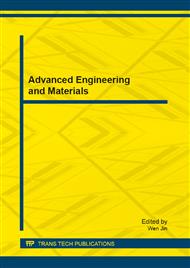[1]
J. Li, S. Chou, W. Yang, and Z. Li, A numerical study on premixed micro-combustion of CH4-air mixture: Effects of combustor size, geometry and boundary conditions on flame temperature, Chemical engineering journal, vol. 150, pp.213-222, (2009).
DOI: 10.1016/j.cej.2009.02.015
Google Scholar
[2]
A. C. Fernandez-Pello, Micropower generation using combustion: issues and approaches, Proceedings of the Combustion Institute, vol. 29, pp.883-899, (2002).
DOI: 10.1016/s1540-7489(02)80113-4
Google Scholar
[3]
D. C. Kyritsis, I. Guerrero-Arias, S. Roychoudhury, and A. Gomez, Mesoscale power generation by a catalytic combustor using electrosprayed liquid hydrocarbons, Proceedings of the Combustion Institute, vol. 29, pp.965-972, (2002).
DOI: 10.1016/s1540-7489(02)80122-5
Google Scholar
[4]
K. Maruta, K. Takeda, J. Ahn, K. Borer, L. Sitzki, P. D. Ronney, and O. Deutschmann, Extinction limits of catalytic combustion in microchannels, Proceedings of the Combustion Institute, vol. 29, pp.957-963, (2002).
DOI: 10.1016/s1540-7489(02)80121-3
Google Scholar
[5]
F. Liu, G. J. Smallwood, and W. Kong, The importance of thermal radiation transfer in laminar diffusion flames at normal and microgravity, Journal of Quantitative Spectroscopy and Radiative Transfer, vol. 112, pp.1241-1249, (2011).
DOI: 10.1016/j.jqsrt.2010.08.021
Google Scholar
[6]
X. L. Zhu and J. P. Gore, Radiation effects on combustion and pollutant emissions of high-pressure opposed flow methane/air diffusion flames, Combustion and Flame, vol. 141, pp.118-130, (2005).
DOI: 10.1016/j.combustflame.2004.12.012
Google Scholar
[7]
H. Watanabe, R. Kurose, S. Komori, and H. Pitsch, Effects of radiation on spray flame characteristics and soot formation, Combustion and Flame, vol. 152, pp.2-13, (2008).
DOI: 10.1016/j.combustflame.2007.07.021
Google Scholar
[8]
Pervez Ahmed, M. A. Habib, and R. Ben-Mansour, Characteristics of air and oxy-fuel combustion in microchannels, In : 9th International Conference on Heat Transfer, Fluid Mechanics and Thermodynamics, MALTA, 16-18 July, (2012).
Google Scholar
[9]
C. K. Westbrook, and F.L. Dryer, 18th Symp. (Int. ) on Combust., The Combustion Institute, Pittsburgh, PA, 749., (1981).
Google Scholar
[10]
J. Li and B. Zhong, Experimental investigation on heat loss and combustion in methane/oxygen micro-tube combustor, Applied Thermal Engineering, vol. 28, pp.707-716, (2008).
DOI: 10.1016/j.applthermaleng.2007.06.001
Google Scholar
[11]
User's Guide, Fluent 6. 3 Documentataion, Fluent Inc., , Lebanon, NH (2006).
Google Scholar
[12]
D. G. Norton and D. G. Vlachos, Combustion characteristics and flame stability at the microscale: a CFD study of premixed methane/air mixtures, Chemical Engineering Science, vol. 58, pp.4871-4882, (2003).
DOI: 10.1016/j.ces.2002.12.005
Google Scholar


